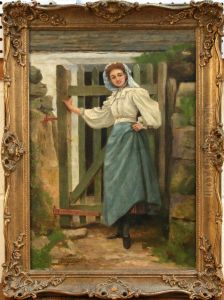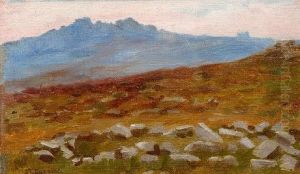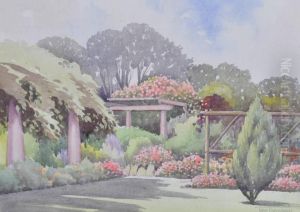John Thompson Dunning Paintings
John Thompson Dunning was an American artist known primarily for his landscape paintings and his involvement with the art community of his time. Born in 1878, Dunning's early life is not extensively documented, but it is known that he pursued an interest in the arts from a young age. His style was influenced by the American Impressionist movement, which was popular during his formative years as an artist.
Dunning's art career spanned the late 19th and early 20th centuries, a period that saw significant changes in the art world. He was part of a generation of artists who were exploring new techniques and approaches to painting, particularly the effects of light and color. Dunning's landscapes are characterized by a soft, diffused light and a harmonious palette that reflects the impressionist style's preoccupation with capturing the transient effects of sunlight.
Throughout his career, Dunning exhibited his works at various institutions and galleries. He participated in exhibitions with other artists who shared his vision and technique, contributing to a vibrant art scene that was in constant dialogue with the evolving trends of European and American art.
Dunning's contributions to art were not limited to his paintings; he was also active in art organizations and societies, which were crucial for the promotion and support of artists during that era. His involvement with these groups helped to shape the direction of American art and provided a platform for artists to collaborate and share ideas.
Unfortunately, like many artists of his time, John Thompson Dunning's recognition has not endured strongly into the modern era. His death in 1945 marked the end of a career that, while perhaps not as celebrated as some of his contemporaries, still played a role in the rich tapestry of American art history. Today, Dunning's works can be found in private collections and occasionally appear in auctions or exhibitions focused on American Impressionism. His legacy lives on through his contributions to the American art scene and the beauty of his landscape paintings, which continue to be admired by collectors and art enthusiasts.


